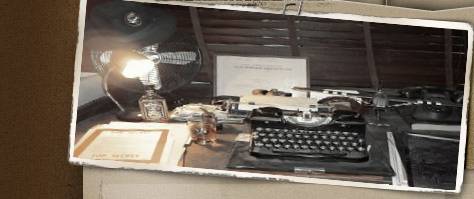|

File No.:
Battle Study # 20
Title: Location of "The
Lost Battalion Engagement" in WWI
Investigation made at:
Binarville, in the Argonne
Forest, France
Period Covered: 2 to 8
October 1918
Date: August to
November 2010
Case Classification:
Description of Battlefield / Combat
Scene
Case Status: Case
Closed
REASON FOR INVESTIGATION:
The location where elements of the
US Army's 77th Infantry Division
held their ground for 5 days against
a numerical superior German force in
World War One is not known to the
general public.
It is located only a few miles from
the location where Sergeant York of
the US Army's 82nd Infantry Division
earned the Medal of Honor. However,
the location of the "Lost Battalion
Engagement" is not as disputed as
the "York Spot" as can be
concluded from
Battle Study # 19.
Battledetective.com visited the
battlefield.
|
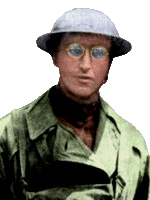 |
SYNOPSIS:
On 2 OCT 1918, units of the 77th
"Liberty" Division of the US Army
advanced into the Argonne Forest in
France. Over the next 5 days a mixed
unit refused to surrender even
though this "Lost Battalion" was
completely surrounded, under
constant German attacks, low on
ammunition and supplies, with hardly
any shelter and just limited access
to water. Of the more than 600 men
first trapped in the "pocket" just
below the ancient Binarville - road,
only around 200 walked out. Three
Medals of Honor, twenty-seven
Distinguished Service Crosses, and
many other medals were awarded to
the soldiers involved.
Two pilots of the Army Air Corps
also received Medals of Honor for
their part in the engagement. They
conducted the first attempted aerial
resupply drop in military history
and provided important intelligence
gathered during their sorties over
the battlefield.
|
The Lost Battalion
The nickname "The Lost Battalion"
was given to the unit by war
correspondents at the time but the
term is incorrect as the force
actually consisted of two
battalions:
1st BN/308th Infantry Regiment
commanded by Major Charles White
Whittlesey,
2nd BN/308th Infantry Regiment,
commanded by Captain George G.
McMurtry and
"K" Company of 3rd BN/307th Infantry
Regiment, commanded by Captain
Nelson M. Holderman,
"C" and "D" Companies of 306th
Machine Gun Regiment (attached to
the two battalions of the 308th.)
In military terminology, "The Lost
Brigade" would have been a more
appropriate nickname.
Due to the development of the
tactical situation Whittlesey
assumed command over the entire
force, since he was the senior
officer.
(Click to enlarge)
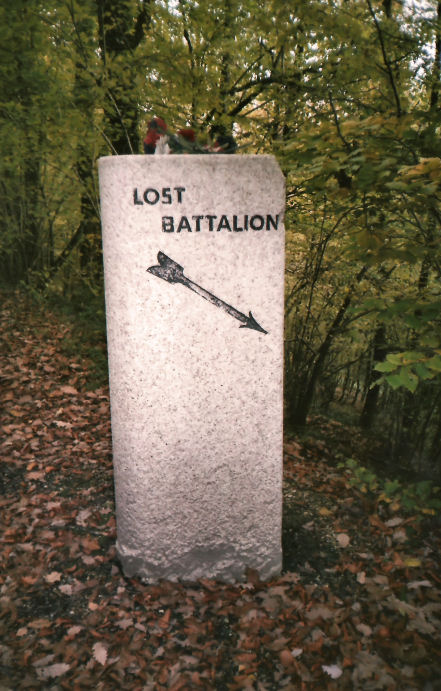
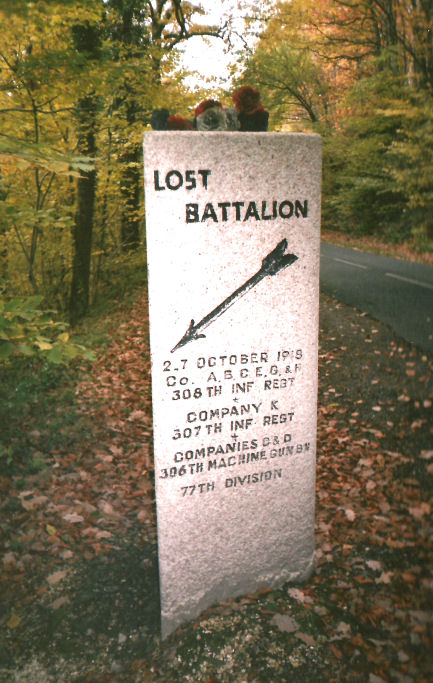
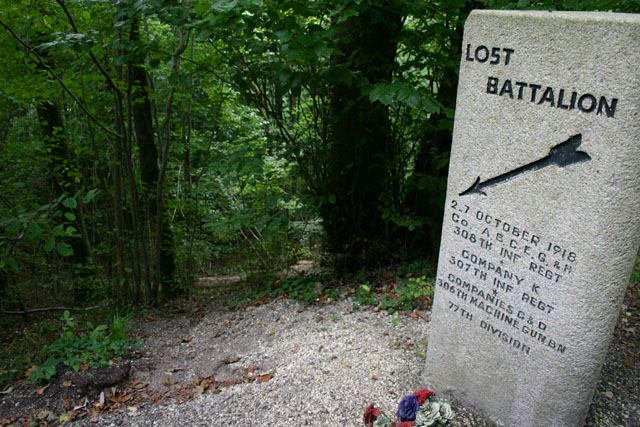
 |
|
Meuse-Argonne Offensive
At the start of the operation on 2
OCT 1918, the 77th Division,
including its 308th Infantry Regimnt, were
part of a large scale offensive
through the Argonne Forest. Whittlesey's 1st Battalion
of the 308th Regiment was the
only element to reach its designated
objective of a road junction at the Charlevaux Mill. Here, they were
joined by 2nd BN/308th Infantry
Regiment.
In the meantime the remainder of the
offensive ground to halt and the
other Allied forces pulled back to
the trenches of their original Line
of Departure. With the primitive
communications (carrier pigeons and
telephone lines which were easily
cut), the two battalions found
themselves in a deep bulge into the
German lines which was then cut off
and surrounded before the “Lost
Battalion” realized its situation.
Shortly thereafter, they were joined
by "K" Company of the 307th
Infantry, which had become separated
from its parent battalion during the
confusion of the stalled advance.
The following days, the unit was
under constant German attack and had
no more ammunition, rations, medical
supplies and clothing than which
they had carried into the "pocket".
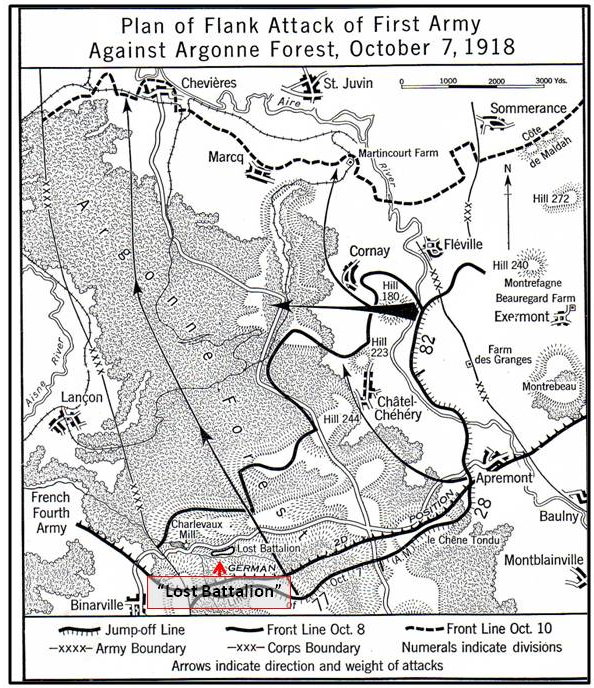 |
|
|
Winged Hero
On 4 OCT 1918 inaccurate coordinates
were delivered by one of the pigeons
and the unit was subjected to
"friendly fire". The unit was saved
by a carrier pigeon, named Cher Ami,
delivering the following message:
"WE ARE ALONG THE ROAD PARALELL
276.4. OUR ARTILLERY IS DROPPING A
BARRAGE DIRECTLY ON US. FOR HEAVENS
SAKE STOP IT."
Cher Ami sustained wounds from
German ground fire. She was awarded
several medals and her stuffed body
is on display in the Smithsonian
Institute today. |
|
(Click to enlarge)

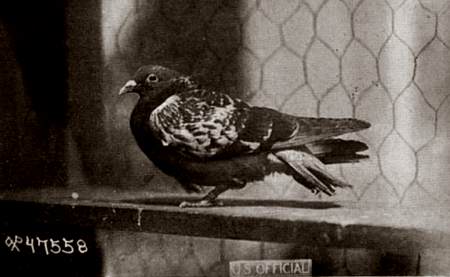 |
Relieve
The fortunes turned on 6 OCT 1918
when Army pilot 1st Lieutenant
Harold E. Goettler and his
gunner-observer 2nd Lieutenant Erwin
R. Bleckley located the front line
between the Lost Battalion and the
surrounding Germans. Both airmen
were wounded by German ground fire.
Their plane crash-landed on Allied
lines and both men died. Their
notes, however, allowed the American
artillery to fire more accurately on
the Germans and to organize a relief
campagne.
Shortly before the relief forces
arrived on 7 OCT 1918, a private
from Whittlesey's battalion, who had
been captured by the Germans,
returned with a letter from the
German commander calling for the
surrender of the Lost Battalion.
Whittlesey and McMurtry deducted
that the Germans were desperate and
on the edge of defeat themselves.
When word of the surrender proposal
filtered through the ranks, it was a
moral booster and inspired the men
into even stiffer resistance.
Whittlesey ordered his men to remove
the white crossed Battalion air
identification panels in front of
their positions, to make sure that
they would not be mistaken by the
Germans for surrender flags.
|
Medals
After the besieged troops were
relieved Medals of Honor were
awarded to airmen Goettler and
Bleckly and to: |
|
Major Charles White Whittlesey
Medal of Honor Citation |
|
Captain George C. McMurtry |
|
Medal of Honor Citation |
Captain Nelson M. Holderman
Medal of Honor Citation |
|
|
|
Summary of action by 77th
Division General
The actions of the units mixed into
"The Lost Battalion" were summed up
in this General Order by General
Alexander, commanding the 77th
Infantry Division:
"HEADQUARTERS 77TH DIVISION
France.
April 15, 1919
General Order Number 30:
I desire to publish to the command
an official recognition of the valor
and extraordinary heroism in action
of the officers and enlisted men of
the following organizations:
Companies A, B, C, E, G, H 308th
Infantry
Company K 307th Infantry
Companies C, D 306th Machine Gun
Btln.
These organizations, or detachments
therefrom, comprised the approximate
force of 550 men under command of
Major Charles W. Whittlesey, which
was cut off from the remainder of
the Seventy-Seventh Division and
surrounded by a superior number of
the enemy near Charlevaux, in the
Forest d'Argonne, from the morning
of October 3, 1918, to the night of
October 7, 1918.
Without food for more than one
hundred hours, harassed continuously
by machine gun, rifle, trench mortar
and grenade fire, Major Whittlesey's
command, with undaunted spirit and
magnificent courage, successfully
met and repulsed daily violent
attacks by the enemy. They held the
position which had been reached by
supreme efforts, under orders
received for an advance, until
communication was re-established
with friendly troops.
When relief finally came,
approximately 194 officers and men
were able to walk out of the
position. Officers and men killed
numbered 107.
On the fourth day a written
proposition to surrender received
from the Germans was treated with
the contempt which it deserved.
The officers and men of these
organizations during these five days
of isolation continually gave
unquestionable proof of
extraordinary heroism and
demonstrated the high standard and
ideals of the United States Army.
Robert Alexander, Major General, US
Army
Commanding"
|
Battlefield visit
On Saturday 30 OCT 2010
battledetective.com visited the
battlefield.
We stopped at the Lost Battalion
Monument marker along the French
D442 highway. |
|
(Click on the
thumbnails to enlarge)

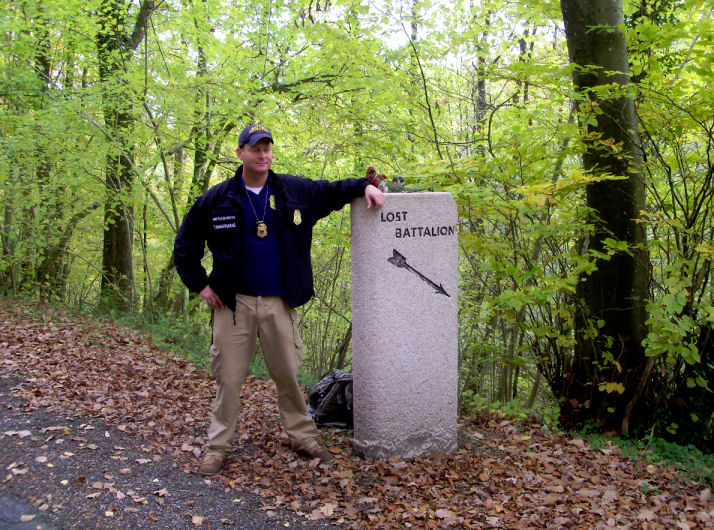 |
We then climbed down the steep slope
from the road to the base of "The
Pocket" and the stream that ran at
the bottom of it.
We could appreciate the problems the
terrain features gave the American
defenders of the slope. We were able
to see the stream from the start of
our climb on the road top all the
way down.
And yet this creek had proven to be
so difficult to reach when it was in
range of German snipers.
The slope showed many indentations
which, most likely, were foxholes of
the men of The Lost Battalion once.
|
|
(Click on the
thumbnails to enlarge)



|
|
This is an impression of “The
Pocket”: |
|
(Click on the
thumbnails to enlarge)
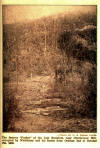
_small.jpg)
 |
|
After taking in the area, we climbed
up again.
Binarville Lost Battalion Monument
We made sure to make a stop at the
recently dedicated Lost Battalion
Monument near the pond where the
Charleveaux Mill once stood. |
|
(Click on the
thumbnails to enlarge)


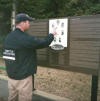
|
|
CONCLUSIONS:
Although it has been exposed widely
in the American press, the accounts
of what happened to the encircled
brigade sized unit dubbed "The Lost
Battalion" do not differ
significantly. Except for the
Charleveaux Mill which is not
present today, the terrain features
of the battlefield remain largely
the same as in 1918. Our visit in
the same month as when the battle
took place, 92 years later, added to
a better understanding of the
difficulty, the American defenders
found their selves in. |
|
EXHIBITS:
In closing we will show the
mixed unit photograph that was taken
after the siege of the "Lost
Battalion" was lifted.
We have also published digital
photographs of the man who lead them
through this ordeal.
|
|
(Click on the
thumbnails to enlarge)

_small.jpg)
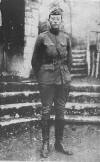
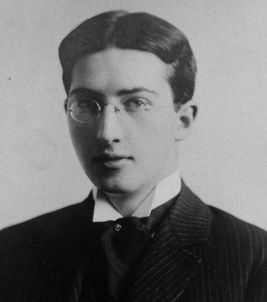
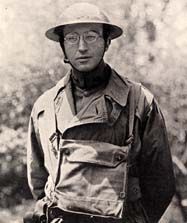
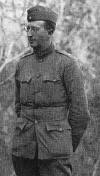 |
|
August 25th, 2012 UPDATE:
We found a 77th divisional patch on
an auction site and bought it for
illustrational purposes.
Also, during a recent trip to the
Ardennes Forest we found a US Army
77th Infantry helmet of WWI vintage
in Poteau, Belgium. We did not
purchase it because taking the photo
cost less than the 160 Euros on the
price tag. |
|
(Click to enlarge)
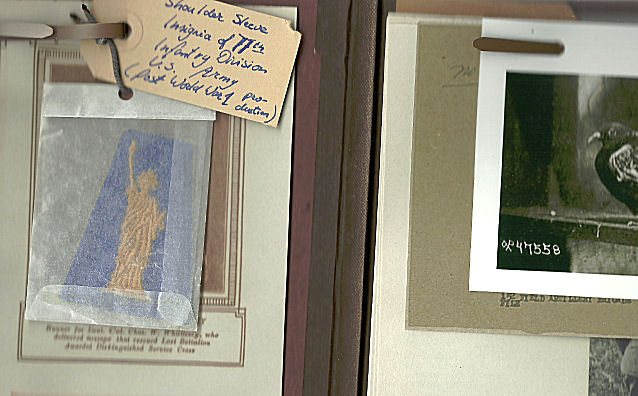
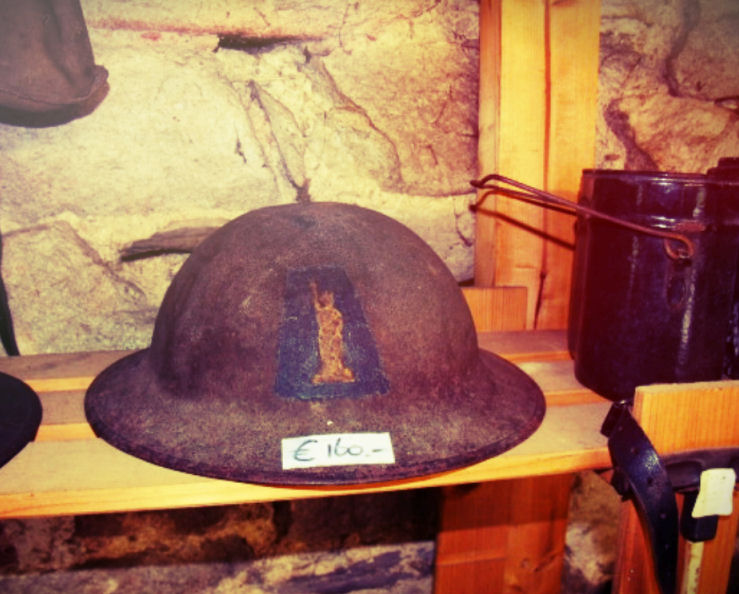 |
|
Back to Battle Studies
 |












